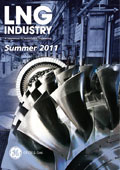Editorial comment
Last month, as I was on holiday in Arizona, other parts of the US were experiencing the worst and most severe outbreak of tornado activity in recorded history. From 25 - 28 April, 362 tornados struck towns across Mississippi, Alabama, Georgia, Tennessee, Virginia, Louisiana and Kentucky, killing at least 350 people and leaving over a million people without electricity. The tornado that struck Tuscaloosa was over 1.5 miles wide, and caused the death of 65 people during its 80 mile journey. This proved to be the deadliest tornado since 1955. One of the largest power plants in the US, The Browns Ferry nuclear power plant in Alabama, houses three reactors of similar design to the Fukushima Daiichi plant in Japan. The tornados knocked out transmission lines, causing the plant to lose power, but backup systems successfully kicked in to cool the fuel and thus a situation similar to Japan’s was avoided.
Register for free »
Get started now for absolutely FREE, no credit card required.
Since the events at Fukushima, Japan has experienced periodic aftershocks and further tsunami warnings. At the time of writing, at least 30 more people have lost their lives to a tornado in Joplin, Missouri – and the storms continue to pose a severe threat. Natural disasters will continue to strike, and the global energy infrastructure will continue to be subject to their forces. However, energy industry professionals are generally a confident lot. According to the New York Times, Preston D. Swafford, TVA’s chief nuclear officer has been quoted as saying that Browns Ferry was ready for “A one-in-a-million-year flood, or however many zeroes you want to go out.” Despite ongoing reassurances like this from the industry, the world looks towards Japan and naturally starts to worry about the safety of nuclear power generation, just as the world looked towards the Gulf of Mexico last year and worried about the safety of deepwater oil and gas exploration.
But does the perceived danger in the public consciousness greatly outweigh the actual likely threat? The partial meltdown of the Three Mile Island Unit 2 nuclear power plant in 1979 was the most serious accident in the history of US nuclear power plant history, despite the fact that no one was killed or injured. While it is true that no nuclear accident has immediately caused anything near the thousands of fatalities stemming from the earthquake, tsunami, hurricanes and tornados in Japan and the US recently, the 1986 memory of Chernobyl and the immeasurable invisible damage that nuclear radiation has the potential to cause is strong in the public psyche. In addition, the phrases “Deepwater Horizon” and “Exxon Valdez” carry with them powerful images of oil drenched animals.
The risks should be taken seriously. However, the energy industry requires to be given the support it needs to progress. The global LNG industry is no stranger to public resistance based on a set of sometimes-overstated fears. What can we do to assuage these fears and continue to develop the energy industry, whether nuclear, oil or LNG? The answer must surely be more than just adapting Mr Swafford’s confident rhetoric, or even educating the public about how reliable we promise to be. The answer is surely to continue to invest in new technologies, new modern facilities and new methods for safeguarding life. As the saying goes, “It takes many good deeds to build a good reputation, and only one bad one to lose it.”

